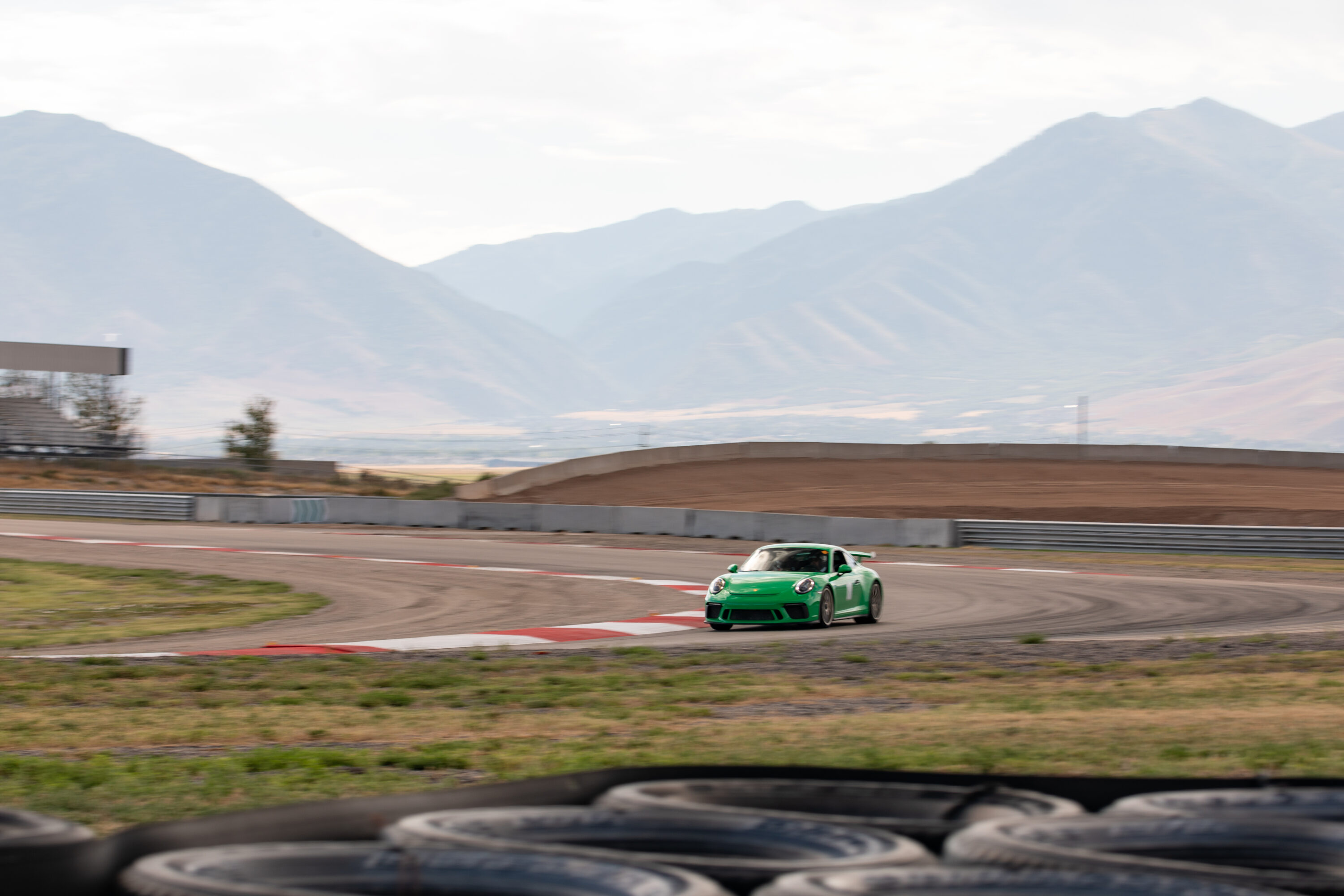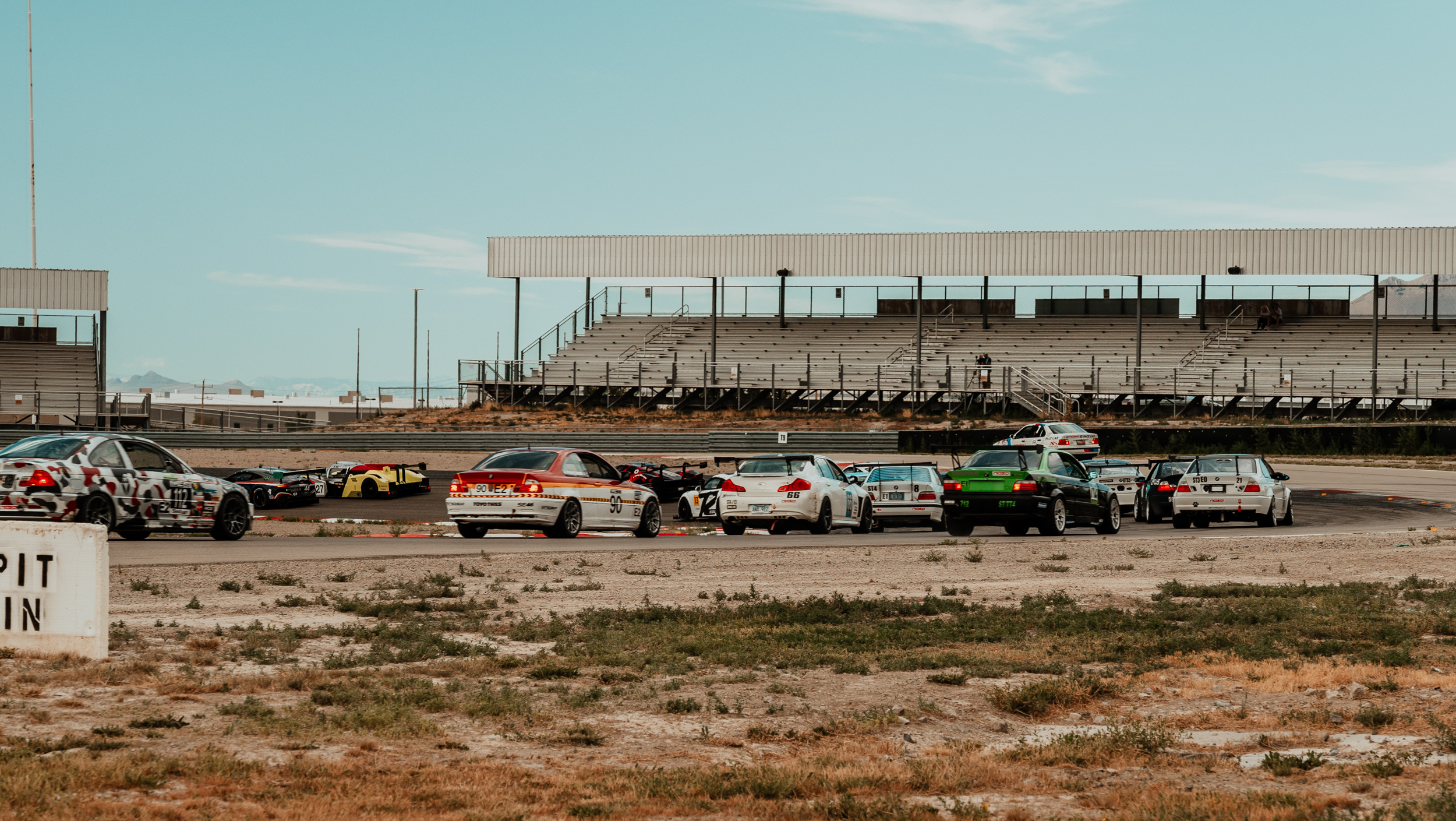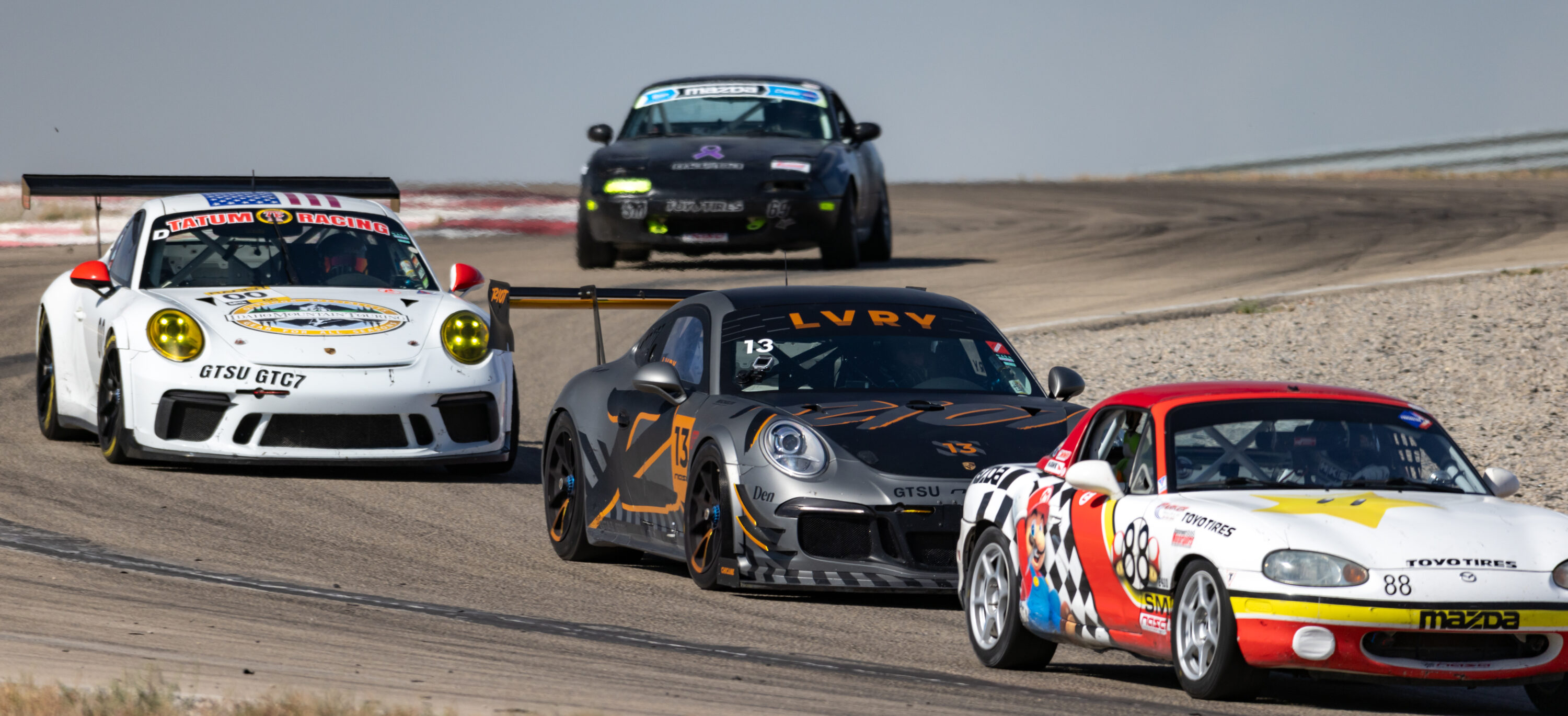Photo Credit: Rich Jellerson
It’s All About Balance
Sweepers are easy to underestimate because they always feel fast. They can also be intimidating for the same reason. Building a strong sense of how the car is balanced and how we adjust our inputs to maximize grip will greatly improve our confidence, which helps us feel comfortable experimenting in order to go faster.
A typical driver progression on high-speed sweepers looks something like this:
- Braking before turn-in
This is a starting point for many new drivers. Over time, the braking becomes lighter and lighter until eventually we move to… - Lifting before turn-in
This follows a similar progression. Rather than a brake-tap, we start with a “big lift”. Over time, the lifts become lighter and shorter when everything is just right, until we… - Work towards going “Flat” — no lifting, just turn-in and hold on!
- Learn how to pre-load
- Lifting or braking after turn-in
In reality, we’re often playing on the edges of the lifting and going flat, while always working on our pre-load. We’re lifting for shorter and shorter amounts of time in our sessions until we feel confident going “flat”. This can vary from lap to lap, based on our own consistency and weather conditions (namely, wind and temperature).
Pre-loading comes into play once we’ve advanced to the point where we can do very light lifts or go “flat”. There are ven corners where it’s appropriate to lift after turn-in in order to keep the car stable.
Let’s start with the progression to going “flat” and why we can’t always get there.
Moving From Brake-Taps to Throttle-Lifts
I used to think that it was just me, the driver, not being “smooth enough”. It took some driving in a variety of cars to really understand what’s going on when we tap the brakes or lift off the throttle. What I learned (accidentally) one day was that the reason why I had to tap the brakes for ‘Work Out’ (West 3 at UMC) had nothing to do with my speed and everything to do with the car’s balance.
Back then, I hadn’t considered the remote possibility of going full-throttle through this particular corner. I was used to doing a light brake tap, turning in, and accelerating rather early in the corner.
One time… I had a mental malfunction and didn’t brake! I lifted off the throttle and just turned. My heart in my throat, I was anticipating an epic off-track excursion. What I found, however, is that my Porsche 944S was tracking right where it should! I laughed out loud in relief, amazement, and exhilaration. From that day forward, I knew that I didn’t have to brake for that corner in many cars!
What I learned that day was how throttle lifts and brake-taps impacted car balance.
By brake-tapping or lifting off the throttle, we transfer some weight onto the front tires. The smoother we can do this, the less the car is upset by this weight shift. The less upset the car is, the more we’re using all four tires to grip the road. This is crucial in sweepers because we’re not wanting the back-end to get too light, nor do we want to give up too much speed. The key, therefore, is to work on keeping the car as stable as possible.
Handling Variance
No matter how hard we try to be consistent, we’re always going to have at least minor changes in how we take the same corner from lap to lap. Some of the trickiest mid- to high-speed corners that come to mind are UMC’s West 3 (Work-Out), East 6 (Satisfaction), and Outer 7 (Witchcraft).
Let’s focus on West 3.
For a SM, you’re playing on the edge of going “flat” and a light throttle lift. It depends on a few things:
- How hard is the wind blowing? Particularly: is it blowing from the North or South?
- How hot is it? This impacts grip, as well as engine power (we’re “flat” from the T1 to — and sometimes through — T3)
- How fresh are the tires?
- Are you on the out-lap, mid-session, or on the last lap of a sprint race?
I’m in the habit of taking note of the wind, considering the temperature, and factoring in the tires’ condition. Then, as I go out on track, I’m not using the out-lap to test if I can go “flat”, but I’m able to evaluate if it’s a possibility for later in the session.
Then, I “warm-up” to finding the right approach for that particular session. If it’s Friday morning, I’m going to be more conservative. By Saturday afternoon, I’m well in-tune with how the track is feeling that weekend and acclimated to the conditions of the day and can “push” as soon as the green flag flies.
The key is to work up to speed and not force the issue. Having a moderate slide or trip through the dirt will impact your lap time far more harshly than pausing for an extra beat to be certain you can go back to the throttle and stay on the black stuff.
That said… West 3 is a crucial corner because it leads onto the very long back straightway, which includes a flat-out Turn 4. So keeping 1–2mph of speed in Turn 3 pays dividends for a long, long time.
Pre-Loading and Being Smooth
One way to be smooth is to utilize pre-loading. Before I had learned a name for this technique, I simply thought of it as “being smooth”. I still think pre-loading is crucial to being smooth — let’s dig into how it works.
Pre-loading is as simple as beginning to turn the wheel slightly before our ‘actual’ turn-in point. It’s particularly useful in medium- and high-speed sweepers.
Turning sharply in sweepers upsets the car, over-loading the outside tires, un-weighting the inside tires, and having to deal with the consequences.
Turning in more slowly introduces another issue, though: you run out of track length to both turn at the proper place on track while also being extremely smooth. The give-and-take ensues: playing with rates of turning, lifting off the throttle.
The more slowly you turn the steering wheel, the less the car weight will shift to the left or right. Through experimentation, you can find that “just right” rate of turn-in that works well for your car and pace.
Lifting After Turn-In
I was introduced to this by NASA Utah co-owner and wiz-bang driver Matt Guiver. Actually, he showed me braking after turn-in. Let’s just say that it was an eye-opening experience.
What it proved to me is this: that turning-in, then lifting off the throttle is not only possible, but it can be fast.
If you lift off the throttle after turning-in, do so smoothly and ideally not entirely — you’ll want to keep about 25–50% throttle if possible. This will shift just enough weight to the front tires that you can carry a bit more speed through the corner, while also not over-lightening the rear tires.
Braking after turn-in can be useful, but typically in medium to low-speed corners (I’m thinking of East 1 and Release).
I’d place these techniques in the more advanced category, so sneak up on these as well. Just know that these are tools in your box and they may be the right answer at times.
Smooth is Fast
The goal always is to be smooth. By being smooth, we can make minute adjustments and play with the edge of traction.
Being smooth is particularly crucial in higher-speed sweepers because of the risk and potential time gain involved.
That said — next time you’re on track, you should ask yourself: am I braking here because I need to reduce my speed, or because it gives my front tires the grip? Sometimes it both, but even in those situations you want to remember that your steering wheel and pedals are weight-transfer instruments. Managing weight to maximize grip is one key to making sweepers fast.






